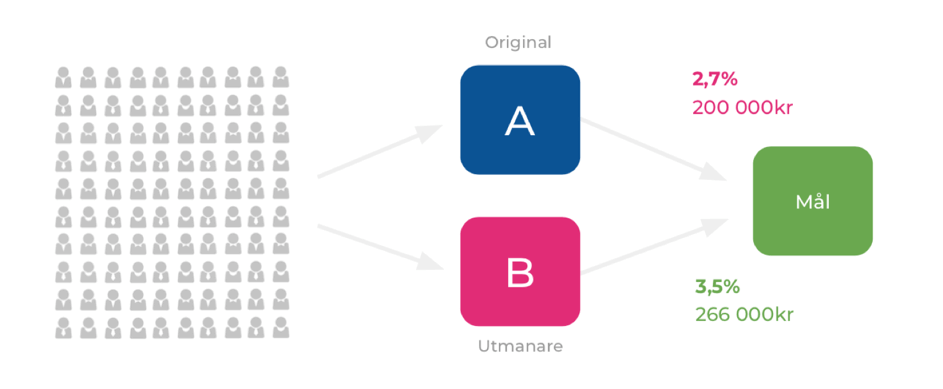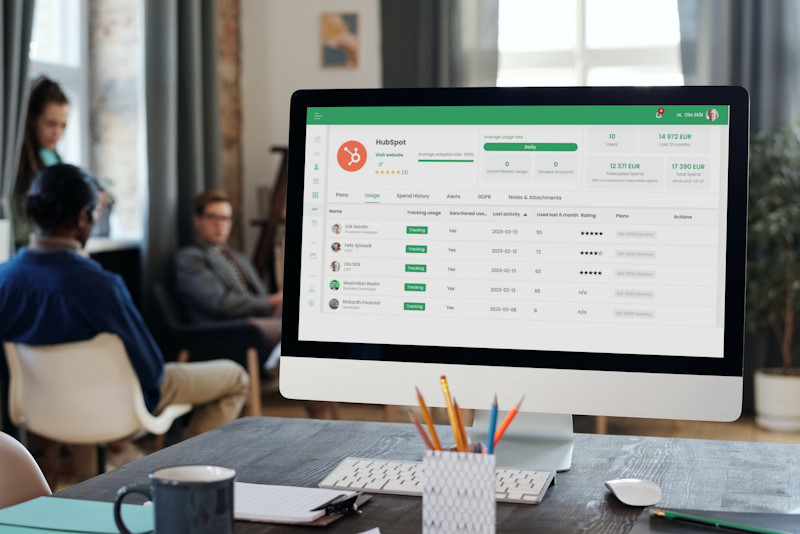Since you are here, you have probably heard about A/B testing before, and you may already understand the context of how it works. Nevertheless, this blog post is just for you to know how your company can benefit from it. I've included below your complete guide to understanding what A/B testing is, what to expect, and how to start working on it.
What is A/B testing, and how can it help your business?
Quickly explained A/B testing is a way to develop your website further. The only thing you need to get started is an idea, one idea about design or user experience change that could improve the results of the website. It could be a more prominent CTA button (Call To Action), or the checkout cart should be green instead of red. The A/B test is the perfect way to base your decisions on facts, not assumptions. If you already feel your website is optimized, why not simply run two campaigns to see which one performs best?
So instead of making a decision, publishing the change, and hoping for the best, you do the so-called A/B test (also known as a split test). When you get your idea and are ready to go, you launch your changes on the website and then send 50% of the traffic to the new version and 50% to the original. Doing so allows you to analyze the results and see if your changes had a positive or negative effect. Either way, you'll be able to learn from the A/B test even if you get a false-positive (in this case, a false-positive is when you have performed a test that doesn't show improved goal conversion, but then you've learned that this idea can be excluded). If you need to, you can try out more than one change at a time; however, we recommend not trying more than three things simultaneously.

Why is continuous A/B testing so important?
When you work continuously with A/B testing, you say that you get a compound interest, also known as the interest-on-interest effect, that increases with every conversion. This means that when you improve 2% on a test, this is added to the current conversion rate. The graph below shows how a conversion increase of 3% per month can double the conversions over two years. Companies like Amazon, Airbnb & Facebook have announced that they've had much success in the number of A/B tests performed over the years.

Start working with A/B testing
Now that you know what an A/B test is and why you should include it in your work, we will move on with how to start working on it with only three simple steps.
Step 1: The hypothesis
As I've mentioned, all A/B tests start with an idea of an improvement you want to test to see if it is correct. It can be as simple as making the USPs clearer under the purchase button. So, in this case, the hypothesis might be the following, "By making USPs (ex. Free Shipping, 1-2 days delivery, Safe E-commerce) clearer, the result will be that more customers go through with their purchases."
Step 2: Create different versions
Now it's time to create one or two different versions you want to try. Here you need a person with some UX & programming knowledge.
Step 3: A/B testing
Finally, the test is ready to run depending on your website's traffic; you should discuss and pin down the number of weeks required to get a 100% fair result. If you find it hard to figure out the right amount of time to run an A/B test, a ground rule is to try it out for a minimum of 14 days, but it's even better if you get the opportunity to try it during an entire month. When the test is complete, you will get a conversion rate on the new version, which tells you if your hypothesis is correct.
Most common mistakes in A/B testing of a website
When considering improvements and hypotheses for an A/B test, there are a few things to avoid. To fully succeed and get the best results out of your A/B test, I recommend you follow these simple but essential steps below.
Test several things at the same time – in the same test
The most common mistake is making several changes to their A/B tests. The problem then becomes finding out which of these changes led to increased conversions or which might have had a negative input. An example is that you decide to change USPs in both the menu and under the payment button on the purchase page. When you later on get the results, you might need help to tell which of them worked well or perhaps did not work at all. Instead, divide your hypothesis into two, making it two separate tests. That way, by running them after each other, you know exactly how the different versions have performed.
Test several things at the same time in different tests
For the same reasons I listed above, it's a best practice only to run one A/B test simultaneously, even if you followed the step above and divided your hypothesis. This way, you minimize the chances of getting an incorrect or unreliable result.
Running many variations
The more versions you try, the more extended the test needs to be run for the results to be accurate. Therefore, you should keep the number of variations low to get a reliable result as quickly as possible.
Valuable tools for A/B testing
Most of the time, Google's tool: Google Optimize, is more than enough. It's 100% free and easy to understand. If you want to try something else, I recommend Optimizely or Sitegainer. They both charge a small fee but are excellent tools worth trying out.
As the subscription economy is booming and spending on subscription services increases yearly, the only question is how businesses will take advantage of this – or fall victim to it. Substly is perfect for small and medium-sized companies that want to improve their subscription and user management. When you need to get the most out of your company subscriptions, Substly is here to support you.





